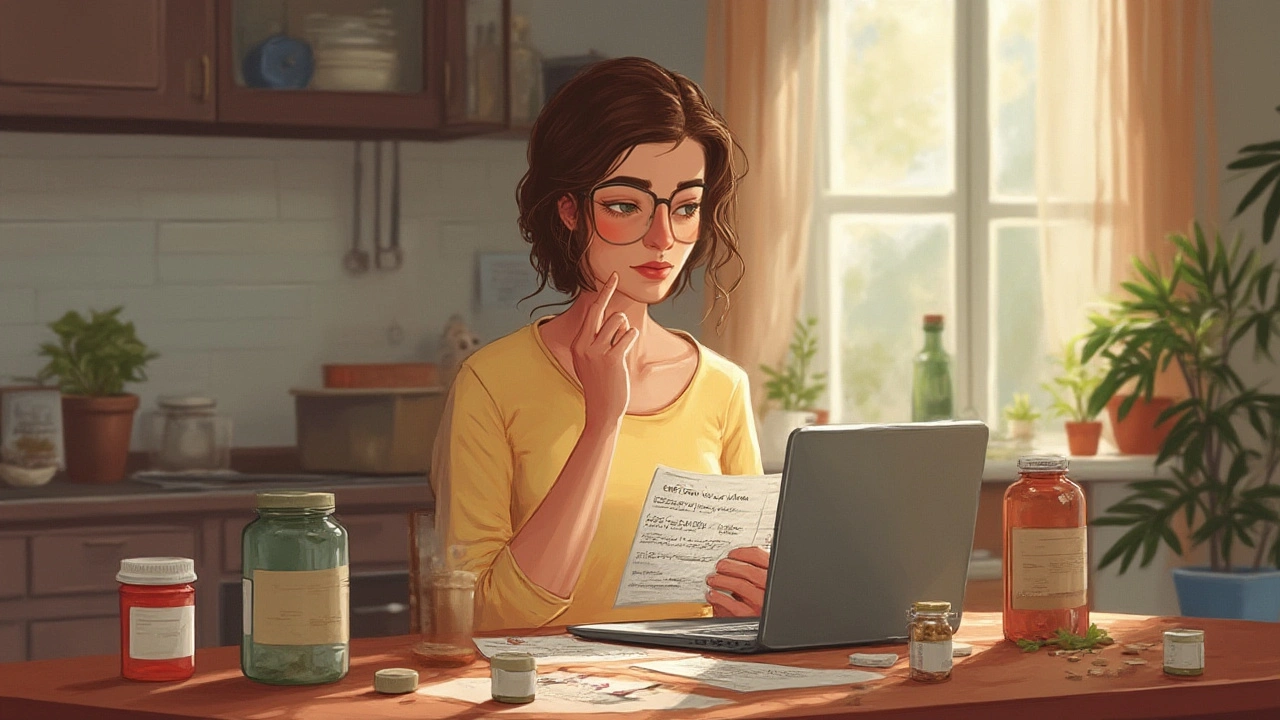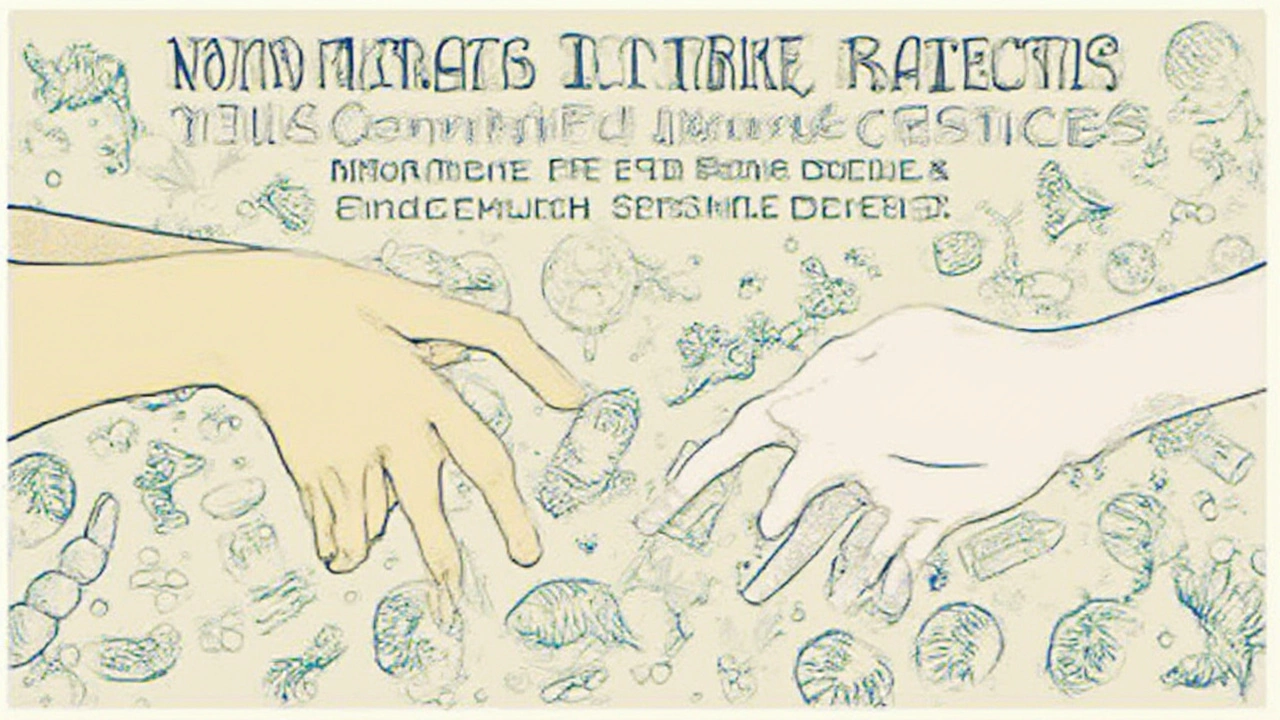Imagine sitting in a sterile clinic, your medical chart in hand, staring at the word "nilotinib." Maybe you know it as Tasigna—a name that's become part of daily life for many people living with chronic myeloid leukemia (CML). But there's always that lingering thought: What if something else could help? Maybe a special diet, herbal tea, or acupuncture to take the edge off side effects or boost your strength. Here's the thing—mixing prescription cancer meds like nilotinib with alternative therapies isn't as simple as adding honey to tea. The stakes are huge. The last thing anyone wants is to mess up their cancer treatment by accident. Let's lay out the real facts, minus the hype.
Understanding Nilotinib: How This Targeted Therapy Works
Nilotinib is a modern cancer drug, designed to go after a very specific target in your body: the BCR-ABL tyrosine kinase. For years, doctors struggled to rein in CML because they couldn’t get medicines to focus exactly where they needed. Nilotinib changed that by sniping at the enzyme that tells leukemia cells to grow out of control. Unlike older chemo drugs, it doesn’t just bulldoze your entire system. That’s why it’s called “targeted” therapy.
It comes in a capsule—your doctor will probably tell you to swallow it twice a day, on an empty stomach. Why empty? Food can boost nilotinib levels in your body way too high, raising the risk of dangerous side effects. Spikes in heart rhythm problems and liver issues can happen if you don’t stick to doctor’s orders. Routine blood tests become a regular thing, tracking everything from white blood cells to liver function. Some people feel great, others cope with muscle pain, headaches, or an itchy rash. But here’s something a lot of people overlook: Nilotinib doesn’t mess around when it comes to drug interactions. Even an innocent-looking herbal supplement—or a glass of grapefruit juice—could turn your CML treatment upside down.
The way nilotinib is broken down in the liver is a big deal. It uses the CYP3A4 enzyme, which is kind of like a busy traffic light for loads of other drugs and natural products. If something blocks this enzyme, nilotinib stacks up in your system; if something speeds it up, your dose fizzles. That’s the sort of thing that leads to emergency phone calls and extra doctor visits. Grapefruit juice is a classic offender—it blocks CYP3A4 and can boost nilotinib levels into the danger zone. St. John’s Wort, which some people take for mood support, does the opposite and speeds things up, making nilotinib less effective. This isn’t just a footnote in the guidebook; it can make a real difference in your treatment outcome. Even common cold remedies or antibiotics (clarithromycin, for example) can ruin your medication schedule, so double-checking every new product you try is not just smart, it’s vital.
Let's talk stats. In 2023, a huge study of CML patients published in the British Journal of Haematology showed that nearly 30% of participants tried an alternative therapy at some point. Many did it for “immune support” or to counteract side effects from the intense medication. But here's the kicker: people who didn’t talk to their health care team about their supplement use were three times more likely to run into risky drug-drug interactions. Providers can't help steer you away from pitfalls if they don’t know what you’re taking. Being up-front isn’t tattling on yourself—it’s self-preservation.

Alternative Medicine: What Works, What’s Risky, and How to Stay Safe
Alternative medicine is a loaded term, covering everything from acupuncture to antioxidants to yoga to vitamin megadoses. For CML patients on nilotinib, not all alternative therapies are created equal. Let’s break it down by category.
Herbal Supplements and Natural Products: This is where things get hairy. Plenty of “natural” products interact with nilotinib’s metabolic pathway. St. John’s Wort is probably the worst offender, but goldenseal, kava, and echinacea have made headlines for causing interactions with other cancer drugs. Always ask your pharmacist or oncologist before starting anything from the health food store. Even turmeric or high-dose garlic can change liver enzyme activity. The bottom line: if you can’t find solid studies showing safety in folks with CML on nilotinib, assume there’s a risk. Better to miss out on a trendy supplement than to have your cancer become resistant to treatment.
If you look at the actual clinical data, the majority of herbal supplements have little-to-no proven benefit in CML, but a few—like ginger or peppermint tea—can help with nausea and rarely interfere with medication. Even so, portion control matters. Teas and culinary herbs in regular food amounts are generally okay. Potent extracts, powders, or capsules are not the same thing and aren’t always safe.
Mind-Body Therapies: Think meditation, guided relaxation, gentle yoga, and acupuncture. This stuff is about improving mental health and coping skills, and the evidence is pretty solid on their benefits for anxiety, fatigue, or insomnia during cancer treatment. Acupuncture done by an experienced provider, with sterile techniques, has a good track record for pain and reducing nausea—but be honest with your practitioner about your white blood cell counts. Low counts mean a higher risk for infection, so skipping needles at certain times makes sense. Meditation apps or mindful breathing sessions in bed are perfectly safe and cost nothing. Keeping stress down has a side effect of its own: it just might help you feel more like yourself in the middle of the CML rollercoaster.
Diet and Nutrition: Here’s a fun fact: there isn’t a “superfood” that boosts nilotinib’s effects. But keeping your diet steady and sticking to meal timing helps your medication do its job. Some people feel tempted by juice cleanses or high-dose vitamin C. These can backfire big time—too much vitamin C can change how your body handles medications and might irritate your gut. Instead, focus on balanced meals, good hydration (but ease up on grapefruit juice!), and simple snacks to battle fatigue or taste changes. If you lose weight, talk to a dietitian. Studies in 2022 showed people with steady weight and blood sugar while taking nilotinib had better treatment outcomes, so it's not just about the number on the scale.
Some alternative practices—like reiki, aromatherapy, or art therapy—aren’t risky, but they also aren’t miracle cures. They’re about you finding comfort or distraction at tough moments. Just remember, no oil, herb, or visualization exercise can swap places with your prescribed meds. They’re best seen as “add-ons” rather than substitutes. Anyone promising to “replace” nilotinib with an herbal concoction is selling you false hope and potentially jeopardizing your future. It's not harsh, it's honest—that's your life, not a test subject.
Curious about popular trends like CBD oil or medicinal cannabis? The jury’s still out about how these interact with nilotinib because research is limited. Early studies suggest possible risks with liver enzymes, so always get medical input first. If you’re in a state where medical cannabis is legal, only work with dispensaries that track products carefully and have a clinician involved. Self-treating pain or anxiety without guidance is risky for anyone with a cancer diagnosis.

Practical Tips: Talking with Your Doctor and Managing Treatment Side by Side
Everyone has run into that friend or Internet forum promising there’s a natural cure your doctor “won’t tell you about.” It’s tempting to listen, especially when you’re tired or scared. But the number one safety hack with nilotinib—really, with any cancer medication—is honesty with your care team. Cancer doctors actually want to help people navigate supplements, not just say “no” by default. When you bring it up, they can check for major red flags and tell you if there's a safe way to try complementary therapies alongside your prescription meds.
Here’s a checklist to keep alternative medicine from tripping up your recovery:
- Make a list of every supplement, tea, oil, or vitamin you use—bring it to your next appointment. Bonus points for including dose and frequency.
- If you’re starting something new (even a “harmless” herbal tea), run it by your pharmacist. They know how these things interact with liver enzymes and can offer up-to-date advice.
- Double-check ingredients in multivitamins, energy drinks, or “wellness shots.” Some blends sneak in herbal extracts you might not recognize.
- For mind-body therapies, let your doctor know your plans, especially if you have balance problems, heart trouble, or low white blood count. Safety first means adapting things to your needs.
- Ask to see a registered dietitian who works with cancer patients. They’re way more helpful with practical food advice (real meals, not just “eat more kale!”).
- Track how you’re feeling. Many clinics now give patients “symptom diaries” to record side effects, fatigue, or mood changes. Notes about alternative practices can help your team see what’s working or causing problems—and whether they line up with test results.
Sometimes side effects make you feel like giving up on nilotinib, or you get desperate and want to try anything just to feel better. If that happens, say so. There are more options for side effect management than ever, like anti-nausea meds, pain therapies, and even dose tweaks. Over half of patients in a 2024 international survey said their care teams helped them find safe, effective ways to handle side effects—once someone spoke up.
So where does nilotinib fit when you’re searching for holistic care? Think of it as the base of your treatment pyramid—the part that must stay solid. Everything else should be built on top, with clear communication and expert backup. There’s nothing wrong with aromatherapy or a little extra ginger tea, but when it comes to mixing cancer drugs and alternative medicine, facts have to beat hope. Your body’s been through enough drama. Take the time to stay informed, check with your team, and be patient with the process. That’s not just playing it safe—it’s giving yourself the best shot at a healthy future.
